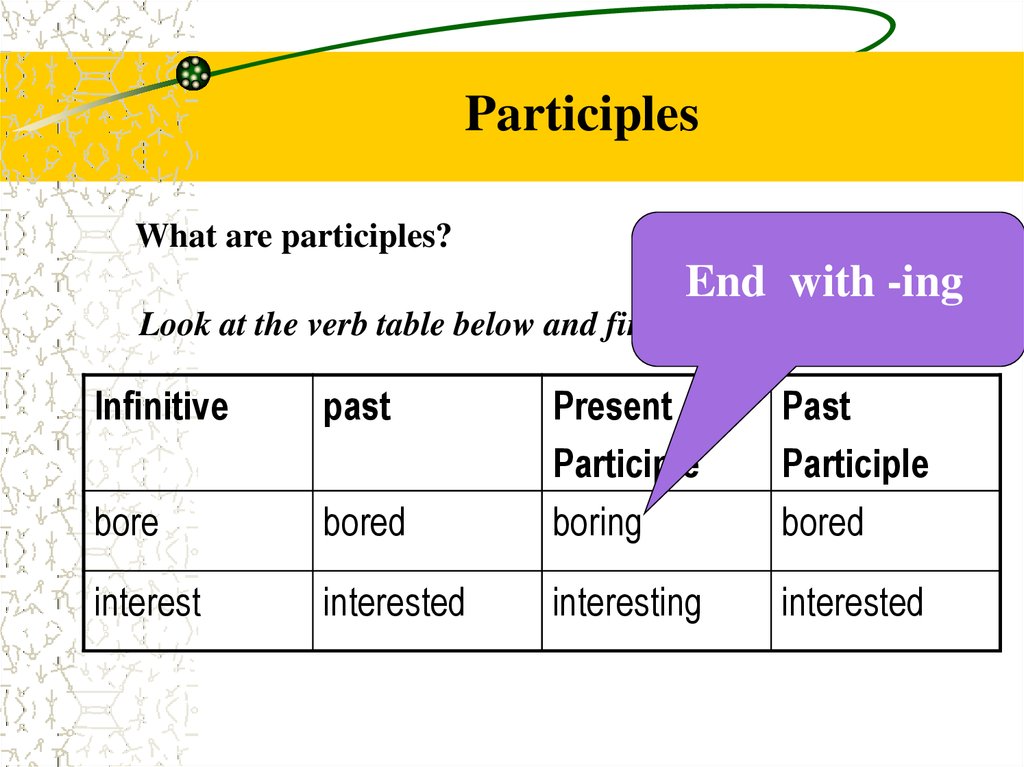

I try to get my students to talk about themselves, such as the things they did the day before. Past Participle: A Simple ExerciseĪs an English teacher, there’s a really simple trick I use to teach my students this concept.

This blog post is available as a convenient and portable PDF that youĬlick here to get a copy. Practice What You Learned with Fun Resources.The Difference Between Past Tense and Past Participle.Well, I’m here to help you out and I promise by the time you finish reading, these concepts will be clear in your head. If you’re reading this post, chances are you’re confused about the difference between the past tense and past participles.

Especially when talking about what’s happened in the past. Talking about time is pretty important in English. Sometimes a present participle (adjective) is mistakenly called a gerund (noun).AugPast Tense vs. In English, participles typically end in -ing, -ed or -en.Ī present participle ending in -ing has the same form but a different function from a verbal noun called a gerund. Nouns can occasionally be derived from these adjectives: When not combined with have or be, participles are almost always adjectives and can form adjectival phrases called participial phrases. The tense is always expressed through the auxiliary verb.

In other languages, there are others, such as future, perfect, and future perfect participles.Ĭontemporary English constructs the perfect, progressive and progressive perfect aspects, and the passive voice from participles and auxiliary verbs. English has two types of participles: the present participle and the past participle. ( grammar ) A form of a verb that may function as an adjective or noun.From Middle English participle, from Old French participle (1388), variant of participe, from Latin participium.


 0 kommentar(er)
0 kommentar(er)
